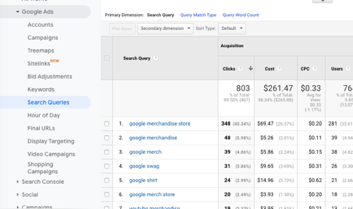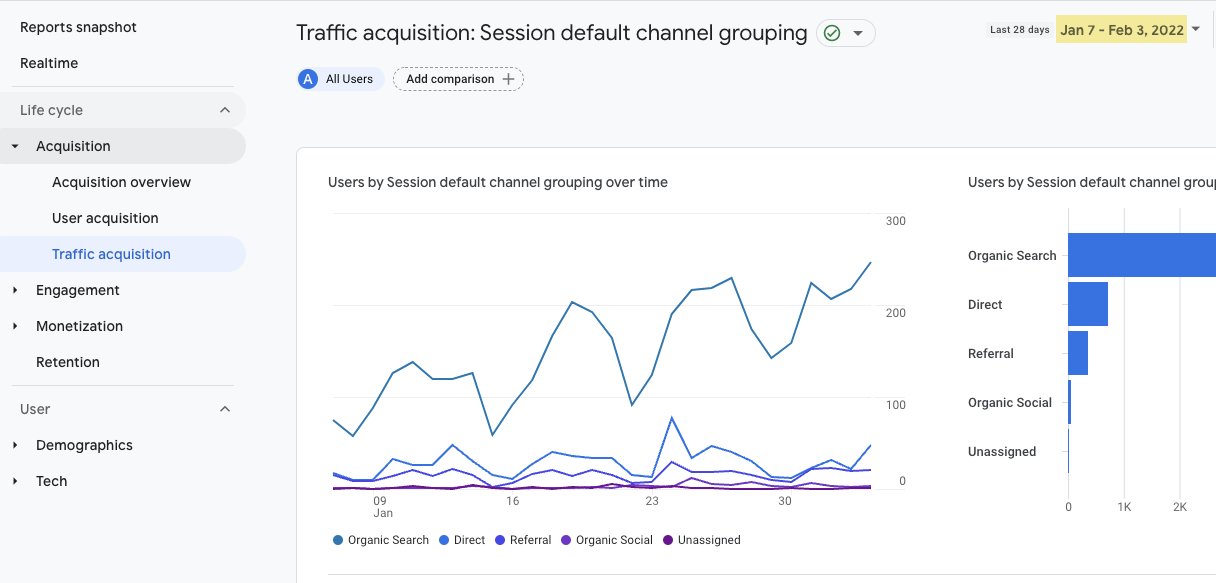Track Success Properly With one of the most Important Google Analytics Metrics
Understanding the nuances of Google Analytics metrics can be pivotal in steering a service in the direction of success. By diving into the core metrics such as audience demographics, traffic sources, habits flow, conversion prices, and jump rate, a wide range of insights waits for.
Audience Demographics

Demographic data can aid companies recognize patterns, choices, and behaviors of their target market. Recognizing the age team that most often checks out a web site can affect material production and product offerings. Comprehending the geographical locations of visitors can help in localizing advertising campaigns and broadening right into new markets. what is a “metric” in google analytics.
Additionally, target market demographics in Google Analytics can reveal important insights concerning the efficiency of existing marketing efforts. By tracking adjustments in demographics gradually, companies can adapt their strategies to better engage with their target audience. Generally, leveraging audience demographic data in Google Analytics is necessary for businesses wanting to improve their on the internet visibility and drive success.
Traffic Sources
When examining internet site efficiency and user engagement, recognizing the sources of website traffic is important for services looking for to optimize their on-line existence. By delving into the web traffic sources in Google Analytics, businesses can obtain useful insights into where their web site site visitors are coming from. This information classifies traffic into channels such as organic search, direct, reference, social, and paid search.
Organic search web traffic stems from search engine results, showing visitors who located the web site with a search query. Straight traffic represents individuals who keyed in the website URL straight right into their browser. Reference traffic comes from external web sites connecting to the site. Social traffic is created from social media systems. Paid search traffic results from on-line ad campaign.
Assessing these website traffic sources enables organizations to assess the effectiveness of their marketing techniques, determine areas for renovation, and assign resources carefully. what is a “metric” in google analytics. By comprehending which channels drive one of the most traffic and conversions, companies can tailor their marketing efforts to make best use of outcomes and enhance total performance
Behavior Circulation
Understanding the habits flow of site visitors is vital for organizations aiming to enhance user experience and conversion prices. Behavior Circulation in Google Analytics offers a graph of exactly how customers navigate via a web site, revealing the path they draw from one page to one more. By evaluating this data, services can determine preferred web pages, drop-off factors, and one of the most usual paths individuals take. This insight helps in maximizing the site format, web content, and navigation to boost customer involvement and ultimately drive conversions.

Conversion Fees
Determining conversion prices is a crucial aspect of assessing the efficiency of a website subsequently site visitors right into clients. what is use this link a “metric” in google analytics. Conversion rates refer to the portion of site visitors who complete a desired activity, such as buying, registering for a newsletter, or completing a contact type. By tracking conversion rates through Google Analytics, organizations can acquire beneficial insights right into the efficiency of their website and advertising and marketing strategies
Analyzing conversion rates enables organizations to recognize which areas of their website achieve success in driving conversions and which might require renovation. By recognizing the factors that influence conversion rates, such as user experience, material high quality, and call-to-action efficiency, services can enhance their website to increase conversions and eventually drive revenue.
Google Analytics gives numerous tools and reports to track conversion prices, such as objective tracking, shopping monitoring, and multi-channel funnels. By using these features, services can check their conversion rates efficiently and make data-driven decisions to enhance their on the internet performance.
Bounce Rate
To additionally determine the interaction and efficiency of a site, examining the bounce price is necessary. The bounce price in Google Analytics refers to the portion of visitors who navigate away from a website after checking out just one resource page, as opposed to remaining to explore various other web pages within the very same site. A high bounce price can show that site visitors are not finding the material they expected, the internet site is tough to navigate, or the landing page does not straighten with the visitor's intent. Comprehending the bounce price can help site owners determine locations for improvement and optimize their site to encourage visitors to remain longer and explore more pages. By assessing the bounce price along with other metrics like time on page and conversion rates, businesses can obtain useful understandings into user behavior and make notified decisions to improve the general efficiency and individual experience of their website. On a regular basis monitoring and dealing with elements contributing to a high bounce price can result in increased engagement, improved conversions, and inevitably, a much more effective online existence.
Conclusion
In conclusion, understanding key metrics in Google Analytics such as target market demographics, website traffic resources, habits flow, conversion prices, and jump price is essential for tracking success successfully. Examining these metrics enables organizations to tailor advertising and marketing techniques, enhance individual experience, and boost content importance. By keeping track of market shifts, website traffic sources, behavior flow understandings, and bounce rates, services can make informed choices to drive total success.
By delving into the core metrics such as audience demographics, web traffic sources, actions circulation, conversion prices, and bounce price, a wealth of insights awaits. Understanding the demographics of internet site site visitors is critical for organizations to produce customized web content, Your Domain Name enhance customer experience, and enhance conversion rates.
By tracking conversion prices with Google Analytics, services can acquire beneficial insights into the performance of their internet site and advertising and marketing techniques.
By examining the bounce price together with other metrics like time on page and conversion prices, companies can acquire important understandings right into individual behavior and make educated decisions to improve the overall performance and individual experience of their web site.In conclusion, understanding essential metrics in Google Analytics such as target market demographics, web traffic resources, actions circulation, conversion rates, and jump price is vital for tracking success efficiently.
Comments on “Comprehending What Is a "Metric" in Google Analytics and Exactly How It Influences Your Data Analysis”